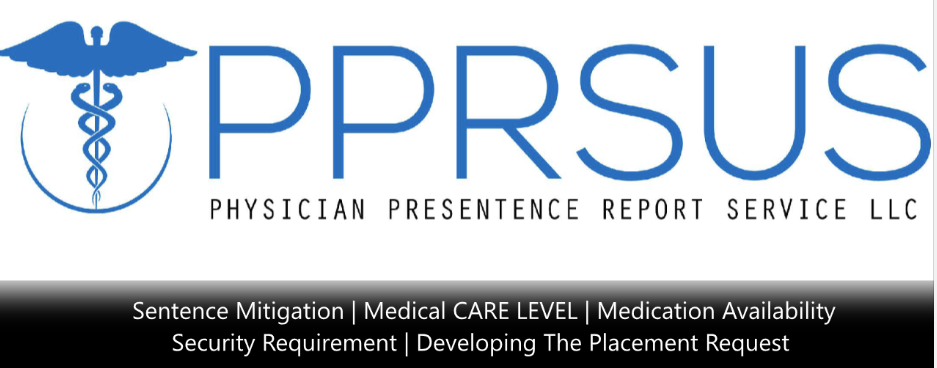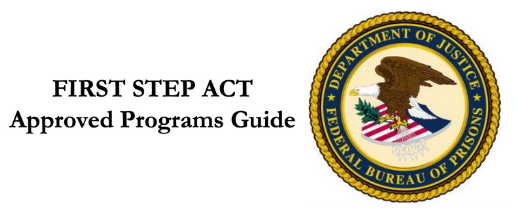
The Skills Program[i] There are only 2 locations nationwide.
Do you have clients facing incarceration in the BOP, and who are being treated for intellectual disabilities, neurological impairments, social deficiencies, or autism? If yes; which of the BOP’s ‘2’ available prison facilities are best suited for their placement? That’s right, there are only 2 locations.
I ask this is because the concept of prison officials engaging individuals with autism (for example), has its own brand of procedural issues. For those with a documented history, this could be critical for the safety of all parties; the inmate, correction officers, and the facility general population.
Increasingly, media outlets are reporting instances whereby police officers are confronting subjects on the streets and encountering behaviors of some as “resisting verbal commands” and “obstructing justice,” among others. Eventually, the presence of autism or a different disability is discovered after these police/civilian engagements. Thus, a BOP facility who at a minimum, provides this type of care at a couple of facilities, should be made part of the BOP placement request through the PSR.
Inmates with significant functional impairment due to intellectual disabilities, neurological deficits, and/or remarkable social skills deficits are considered for the program. Participants must be appropriate for housing in a low or medium security institution. Inmates must volunteer for the program.[i] While this program is conducted over 12-18 months, inmates may continue with the program at additional times.
Autism spectrum disorder
Autism spectrum disorder (ASD[ii]) occurs in all ages, racial, ethnic, and socioeconomic groups, according to the Centers for Disease Control (CDC)[iii]. Autism is generally characterized by social and communication difficulties and repetitive behaviors. Signs of autism[iv] occur in three main areas:
- Social interactions
- Verbal and nonverbal communication
- Repetitive or ritualistic behaviors
- Characteristics
- having difficulty with everyday conversations
- sharing emotions or interests less often than peers
- having difficulty responding to or understanding social cues
- having difficulty understanding other people’s facial expressions or emotions
- having delayed speech or language skills
- having trouble developing or understanding relationships
- doing repetitive actions, such as hand-flapping or rocking
- becoming intensely interested in certain topics
- speaking in atypical ways, such as in a singsong voice
- having a significant need for predictable structure and order
- becoming overwhelmed or angry in new situations
- having a sensitivity to certain stimulants, such as being overwhelmed by loud noises or bright lights experiencing intellectual delays
A particular focus on autism-affected inmates, classified by BOP under the umbrella category as “Intellectual Disabilities, Autism Spectrum Disorders” and “Major Neurocognitive Disorders,” seeks to treat affected inmates with a multidisciplinary modality, albeit only available at two BOP locations nationwide. The Federal Bureau of Prisons amended and published (May 2014)[v] its agenda to handle/treat mentally unstable inmates while incarcerated.
Intellectual disabilities are classified by severity, [i]
- Mild to Moderate
- Mild
- slower in all areas of conceptual development and social and daily living skills
- can learn practical life skills, which allows them to function in ordinary life with minimal levels of support.
- Moderate
- care of themselves,
- travel to familiar places in their community, and
- learn basic skills related to safety and health.
- Their self-care requires moderate support.
- Severe
- has the ability to understand speech but otherwise has limited communication skills (Sattler, 2002)[ii].
- Profound (MH CARE LEVEL III [iii])
- cannot live independently, and
- they require close supervision and
- help with self-care activities.
- limited ability to communicate and often have physical limitations.
Social Deficiency[iv]; reasons why a person may have a social skills deficit.
-
- inability to acquire new skills,
- because of a competency deficit,
- they may struggle to perform because of limited practice or inadequate feedback, or
- external factors
- anxiety or
- chaotic surroundings.
Basic Communication
- inability to listen,
- follow directions and/or
- refrain from speaking.
Empathy and Rapport
- Limited ability to feel empathy and connect with others.
Interpersonal Skills
- Those who have a social skill deficit may struggle with asking accurate and concise questions.
- appear disinterested and even
- anti-social,
- they may struggle to understand proper manners in different social contexts and settings.
Problem Solving: involves asking for help, apologizing to others, deciding what to do, and accepting consequences;
- morbidly shy or
- clinically introverted.
Accountability, fear of being criticized in public;
- struggle with accepting blame for problems or
- dealing with constructive feedback.
Other neurological impairments[vi] (e.g. traumatic brain injury, Spina Bifida, Prader-Willi syndrome, Alcohol-Related Neurodevelopmental Disorders or FASD)
As a Police Officer, Cheri Maples, stated earlier, “…wisdom is being able to discern when gentle compassion is called for and when fierce compassion is called for.” That, my friends, rather sums it up.[ix]

‘The responsibility for a client’s mental and physical health should be safeguarded to protect them from themselves and others, providing a safe environment for the duration of their incarceration.’
This is the responsibility of the legal defense team, court, and BOP.
The Skills Program[ii] is available at these two facilities:
FCI Coleman, FL-Medium
FCI Danbury, CT-Low
[i] https://www.arcnj.org/programs/criminal-justice-advocacy-program/
[ii] https://dev-pprsus.pantheonsite.io/bop-psychology-treatment-the-federal-presentence-report-sentencing-and-prison-placement-preparation/skills-program/
[i] https://www.ncbi.nlm.nih.gov/books/NBK332877/#:~:text=Historically%2C%20intellectual%20disability%20(previously%20termed,100%20in%20the%20population)%E2%80%94and
[ii] https://www.ncbi.nlm.nih.gov/books/NBK332877/#
[iii] https://dev-pprsus.pantheonsite.io/programs/bop-mental-healthcare/
[iv] https://www.masters-in-special-education.com/lists/5-types-of-social-skills-deficit/
[v] https://www.ncbi.nlm.nih.gov/pmc/articles/PMC1350917/
[vi] https://www.ninds.nih.gov/Disorders/Support-Resources
[vii] https://www.cerebralpalsyguide.com/cerebral-palsy/
[viii] https://www.epilepsy.com/learn/about-epilepsy-basics/what-epilepsy
[ix] https://www.correctionalofficer.org/overseeing-inmates-with-autism
[i] https://dev-pprsus.pantheonsite.io/bop-psychology-treatment-the-federal-presentence-report-sentencing-and-prison-placement-preparation/skills-program/
[ii] https://www.additudemag.com/autism-spectrum-disorder-in-adults/
[iii] https://www.additudemag.com/autism-spectrum-disorder-in-adults/#footnote1
[iv] https://www.additudemag.com/signs-of-autism-in-adults/
[v] https://www.bop.gov/policy/progstat/5310_16.pdf
[i] https://www.correctionalofficer.org/overseeing-inmates-with-autism
[i] https://dev-pprsus.pantheonsite.io/bop-psychology-treatment-the-federal-presentence-report-sentencing-and-prison-placement-preparation/skills-program/










 A male inmate facing a high-security penitentiary with a current diagnosis of either: Mood, Anxiety, Schizophrenia, Delusion, and/or Substance-induced Psychotic Disorders
A male inmate facing a high-security penitentiary with a current diagnosis of either: Mood, Anxiety, Schizophrenia, Delusion, and/or Substance-induced Psychotic Disorders
 VI)
VI)


